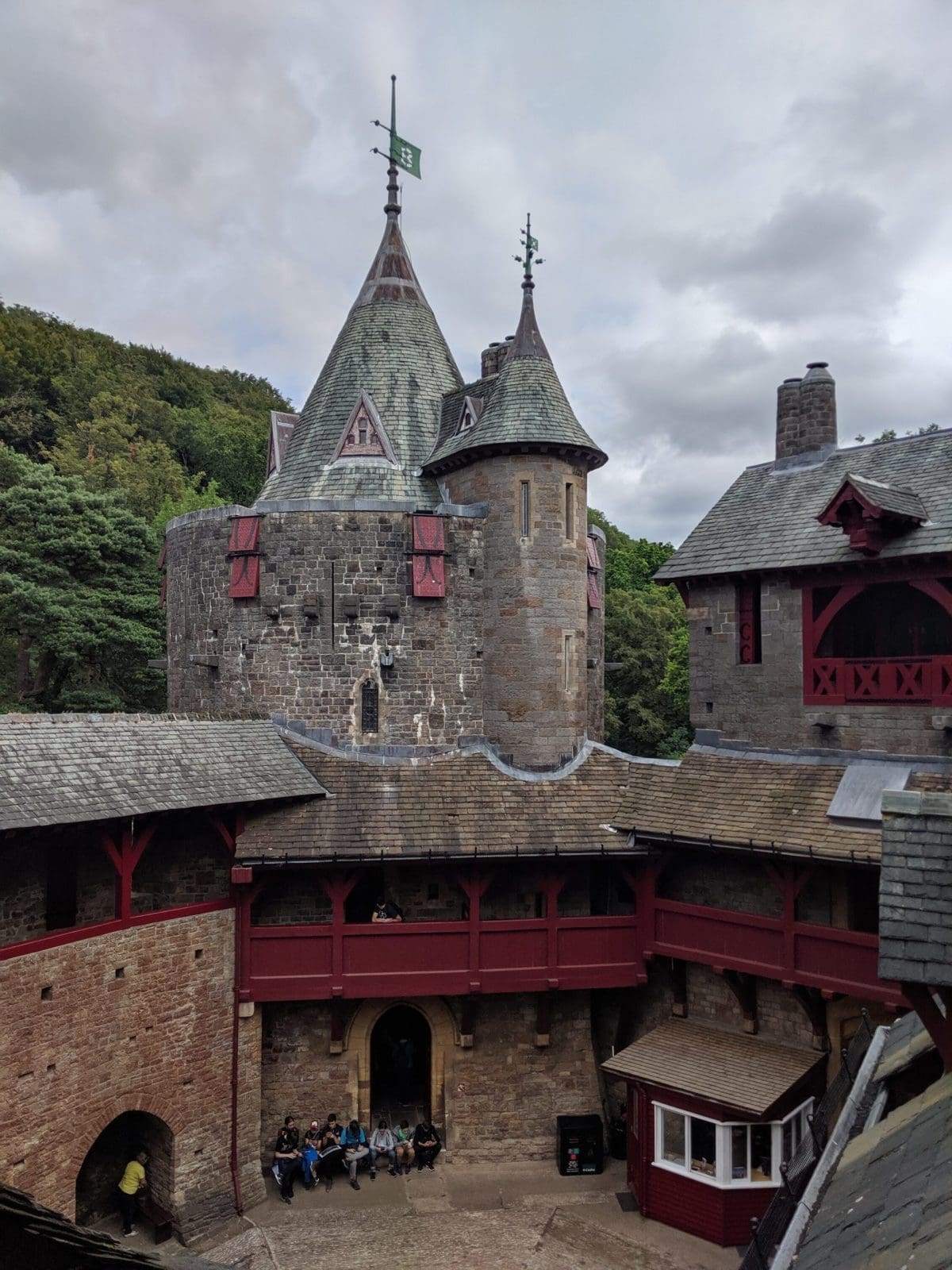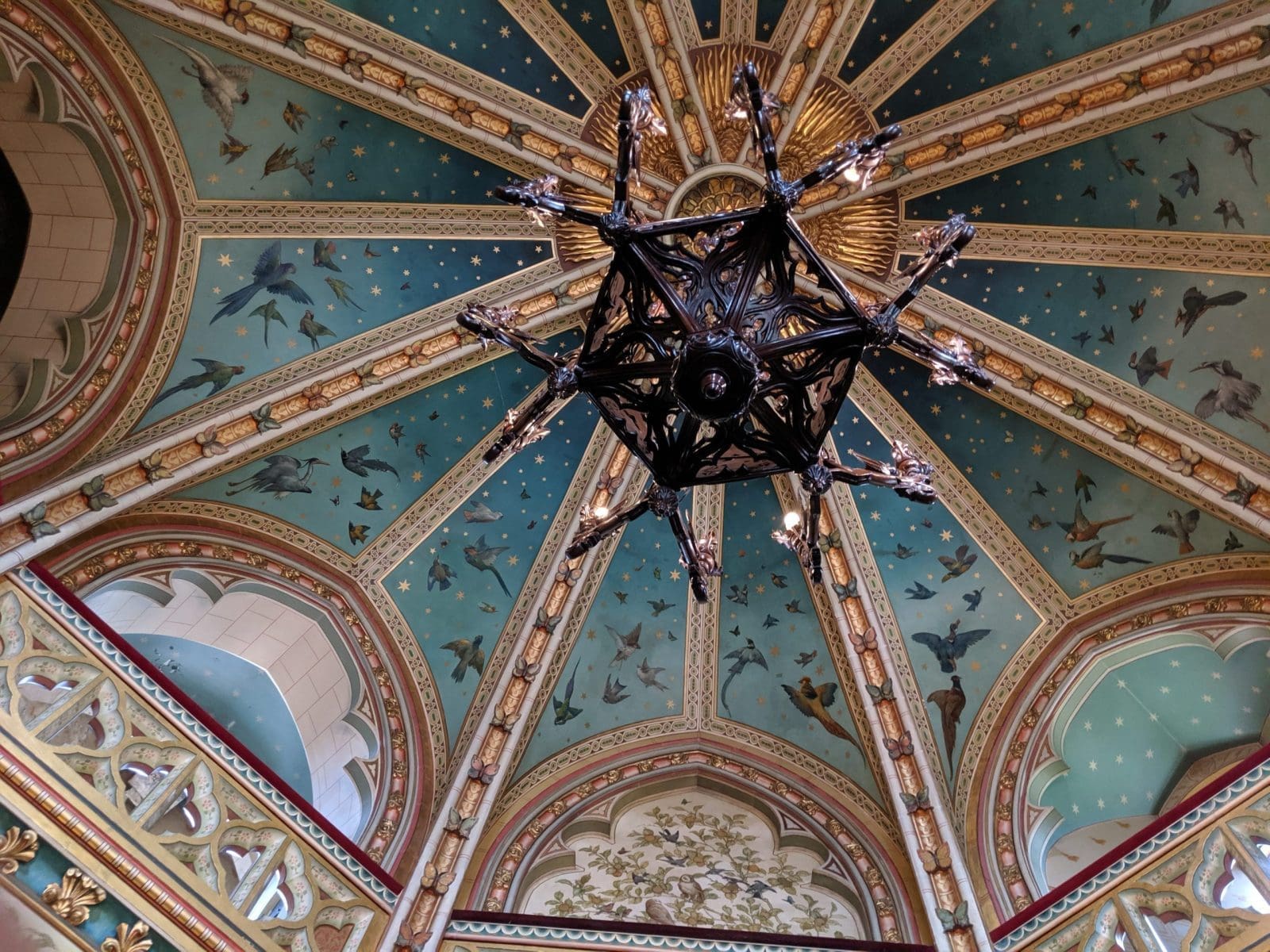The origins of Castell Coch date back to the late 13th century, when the area was conquered by Ifor Bach, a Welsh prince determined to win back lands that had been taken by Norman invaders.
The Origins of Castell Coch
Perched upon a steep hillside overlooking the village of Tongwynlais, the majestic turreted towers of Castell Coch stand as a testament to its medieval heritage as an imposing Welsh stronghold. The castle’s origins date back to the late 13th century, when the area was conquered by Ifor Bach, a Welsh prince determined to win back lands that had been taken by Norman invaders.
Ifor Bach chose the strategic hilltop site, protected on three sides by steep woodland slopes, to construct a formidable castle that would serve as the ancestral home of the Coch rulers of Tongwynlais. The first castle built in the 1280s consisted of a classic Norman design – a stone keep surrounded by a bailey (courtyard) enclosed by a wall. Over the next century, the Coch princes expanded the castle into a much larger and well-fortified complex as their power grew.
By the 14th century, Castell Coch had evolved into a significant Welsh castle. Strong outer curtain walls of stone were added, encircling an enlarged bailey. Three large stone towers were erected at intervals along the walls for defensive purposes and to provide additional accommodation. These robust towers, a hallmark of Castell Coch today, were originally two stories high with crenellated battlements ringing their rooftops.
For centuries, Castell Coch served as the stronghold of the Coch rulers of northern Cardiff. It withstood assaults during wars with England, including when Edward I conquered Wales. The lords of Castell Coch held considerable power in the region throughout the Middle Ages. Though the interior lodgings were remodelled over time, the external stone walls and towers have stood atop the hill since the 1400s, a testament to the enduring strength of this Welsh castle.
Castell Coch Through the Ages
Castell Coch has a long and tumultuous history, changing hands between various Welsh and English nobles as the tides of power ebbed and flowed over the centuries. It served not just as a formidable stronghold, but also as an aristocratic residence for its various owners.
After its construction in the 13th century by Prince Ifor Bach, the castle was home to his Coch descendants for over a hundred years. The most renowned Coch lord to rule from Castell Coch was Maredudd ab Ifor Coch in the 14th century. Under his leadership, the castle reached the height of its importance as a center of regional power. However, the Coch dynasty ended when Maredudd’s grandson died heirless in 1409.
Castell Coch was then granted to English nobles by King Henry IV. During the reign of the Tudor dynasty in the 1500s, it was bestowed upon the Herbert family, who renovated the medieval interior with Tudor fixtures. The Herberts’ tenure ended when fervent Royalist Sir Richard Herbert was executed by Parliamentary forces after the castle fell during the English Civil War in 1648.

Having sustained substantial damage during the Civil War sieges, Castell Coch was never restored or reoccupied. By the 18th century, it had fallen into a deteriorated state, with crumbling walls and collapsed towers. Though the exterior castle walls remained largely intact, the interior buildings were in total ruin. Only scattered stones and rubble outlines of rooms marked where once the great hall, chapels, and grand chambers had stood.
Abandoned and neglected for over two centuries, the faded ruins of Castell Coch stood sadly atop the hill as merely a shadow of its former glory days as an impenetrable Welsh citadel and aristocratic haven. It wasn’t until the Victorian era that this once magnificent castle would be revived from its ruinous state.
Restoration and Rebirth in the Victorian Era
After sitting abandoned and in ruins for over 200 years, the fate of Castell Coch changed in 1875 when it was purchased by John Crichton-Stuart, the 2nd Marquis of Bute. This wealthy aristocrat decided to undertake an extensive reconstruction project to restore the castle to its former glory.

Enamoured with medieval architecture and design, the Marquis hired the eminent architect William Burges to oversee the total restoration and remodelling of Castell Coch in the Victorian Gothic Revival style. Burges approached the project with zeal, crafting an idealized fantasy version of a medieval castle.
The restoration was focused on exterior reconstruction at first. Burges rebuilt the three stone towers, carefully recreating the original 14th century designs. The crumbling curtain walls encircling the castle were repaired and heightened for a more imposing effect. Elaborate cone-shaped roofs adorned with finials were added to each tower, complemented by decorative metalwork along the parapets.

Attention then shifted to remodeling the castle interiors, which Burges filled with extravagant flourishes aimed to evoke an imagined medieval aesthetic. The rooms were redesigned in lavish Victorian style, with intricate stone carvings adorning the fireplaces and walls. Stained glass windows bearing heraldic designs and mottoes in Latin were inserted to cast colorful light. Even the ceilings were decorated with vivid murals and ornate ribbed vaulting.
No detail was overlooked in Burges’ meticulous vision to bring Castell Coch back to life as a romanticized Victorian dream of a medieval castle. Tragically, he passed away in 1881 before the project was completed. The Marquis hired another architect, William Frame, to finish the restoration according to Burges’ original elaborate plans. By 1914, the resurrection of Castell Coch was finally complete.
Castell Coch Today
The extensive restoration of the 19th century transformed Castell Coch from a neglected ruin into one of the most well-preserved and elaborately appointed castles in all of Wales. Today, it stands as a monument not only to its medieval Welsh heritage, but also to the Victorian era that resurrected it.
Now owned by Cadw, the historic environment service agency of the Welsh government, Castell Coch is a popular tourist destination receiving over 30,000 visitors per year. The castle is open to the public for guided tours and self-guided exploration. The ground floor houses a tea room and gift shop catering to guests.
Tours take visitors back through seven centuries as they walk amongst the Victorian staterooms, gothic chambers, and medieval towers. Costumed guides recount tales of the nobles and warriors who once walked the same halls and battlements. The interiors reflect how extravagantly the rooms were decorated during Castell Coch’s Victorian rebirth, with elaborately carved ceilings and colourful murals covering the walls.
Climbing the narrow spiral staircases inside the towers rewards visitors with panoramic views from the rooftops across the surrounding wooded hillsides and valleys. The red stone architecture glows magically in the sun, contrasted by lush green foliage. It’s easy to imagine archers positioned atop these same towers centuries ago, ready to defend the castle from invading forces.
In our modern era, Castell Coch retains its medieval aura and romantic Victorian charm. Its recreation in the Gothic Revival style provides a glimpse into both the Middle Ages and the elaborate tastes of the Victorian nobility. This fusion of history makes Castell Coch a truly unique and iconic castle that continues to enchant visitors from around the world.
How to find Castell Coch
Map to Castell Coch Map and directions
Castell Coch address Castell Coch, Tongwynlais, Gwaelod-y-garth, Cardiff, Wales, CF15 7JS, United Kingdom






